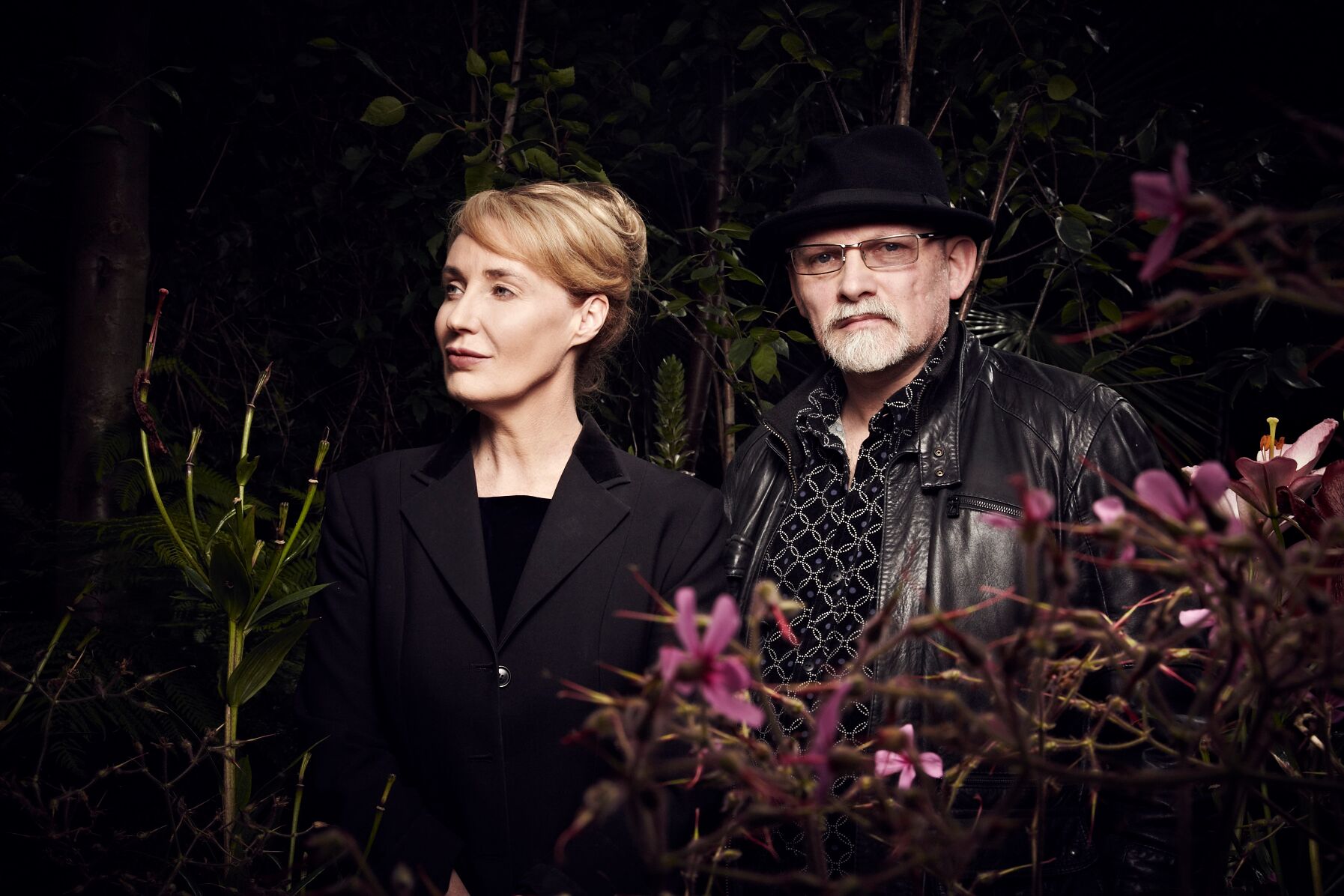When I connected with Brendan Perry of Dead Can Dance via Skype at his home in France, it was right after Halloween, a French date with a much different set of traditions than the candy-laced and sexed-up happy horror show it’s become in America.
“It’s actually a holiday here in France—All Souls’ Day. I didn’t go, but all my French family get together at the grandparents’ and they have a meal, which is kind of traditional,” Perry explains. “It’s a remembrance of all the family members that passed away. The American tradition is a weird one, isn’t it?”
Perry took my call to talk about Dionysus, the latest album from his and Lisa Gerrard’s group Dead Can Dance, and the first since their 2012 release, Anastasis. Even amongst the band’s expansive catalog, Dionysus exists in a somehow deeper, more visceral universe than anything else they’ve released to date. It’s powered on primal rhythms that stretch back centuries, and composed on the ancient and obscure instruments from whence they came. It’s the sound of a place I’d like to go and possibly never return from.
“About two years ago, I read a book by Friedrich Nietzsche called The Birth of Tragedy from the Spirit of Music,” Perry explains when asked about the genesis of his latest work, which is broken down into two acts: “Sea Borne – Liberator of Minds – Dance of the Bacchantes” and “The Mountain – The Invocation – The Forest – Psychopomp.”
“It’s a book about early Greek tragedy in theater, and about what he considered to be the two major energies that work through ancient Greek creative thinking. The Apollonian on the one side, and the Dionysian on the other. It was a revelation reading the summation of his belief that the combination of these two strains created the most sublime art. It’s like a controlled chaos. For me, some of the best music is like that.”
This spark of inspiration led Perry down a six-month rabbit hole, where he consumed as much information about Dionysus as possible, taking in a series of books and documentaries. By the end, it felt like the beginning of a new Dead Can Dance album. Our conversation continued with talk of weird instruments (like the Slovakian shepherd’s flute) and the joys of getting metaphorically naked.

Lisa Gerrard and Brendan Perry / photo by Stephanie Füssenich & Vaughan Stedman
Through all of your research, what would you say was the spark that kept you pursuing Dionysus?
I think if I couldn’t see a contemporary line, where I could see these Dionysian tendencies within people still being celebrated, then it would’ve been something a little bit…dead. Seeing so many Dionysian ceremonies still being performed throughout the world is what kept me interested. Spring festivals, harvest festivals, people getting dressed up and wearing masks and celebrating nature, the fruition of planting, and celebrating the seasons, transitions. It’s a really dynamic thing that still happens around the world, especially in rural communities. It’s remarkable that in this day and age, human beings still have this desire to basically get naked—I mean that in a metaphorical sense—to celebrate nature in such a profound, uplifting, and uproarious way.
You learned to play a series of obscure instruments. Did that come specifically from making Dionysus?
I decided that the bedrock of instruments I was going to use to make the album had to have an archaic quality. I decided on traditional folk instruments from around the Mediterranean as the first port of call. Those are really old. The ancestry goes back hundreds, if not thousands, of years. I wanted to build a bridge to these traditions that still celebrate Dionysus in remote locations. Some of them I already had. The new ones were like the Slovakian shepherd’s flute, this giant instrument called a fujara. It creates lots of overtones. They use circular breathing. It has a bit of a didgeridoo quality. What I like is that it can mimic animal and bird sounds.
What kind of a live group will you have to assemble in order to recreate this album in concert?
“It’s like a controlled chaos. For me, some of the best music is like that.”
Well, that’s literally the million-dollar question [laughs]. It would cost a lot of money to put it together. Unfortunately, it’s not practical—we’d need about six singers just to do the chorus parts. I wouldn’t want to rely on too much technology. It’s a concession you have to make, but we like to balance it out with as much live performance as we can. In that respect, we do tend to have large ensembles. On the Anastasis tour, we had seven performers. On this next tour, we’re going to have eight. There will still be a lot of technology, since we’ve covered so many different types of music over the years. To represent that, we do have to use sample-based libraries, but they are performed. Everything is performed; we don’t use backing tracks.
Is this new group assembled and rehearsing now?
Yeah, it’s the same group as the last tour, plus my brother, Robert. He’s a multi-instrumentalist and he sings. Because it was impractical to perform Dionysus live, and I didn’t want to break it down into constituent songs, we’ve decided that another format would be a celebration of our musical legacy. We’ve realized recent generations never had the opportunity to see us perform in the ’80s or even the ’90s. So what we’re doing is taking studio tracks from early albums that we’ve never performed live and arranging them for this upcoming tour. FL









